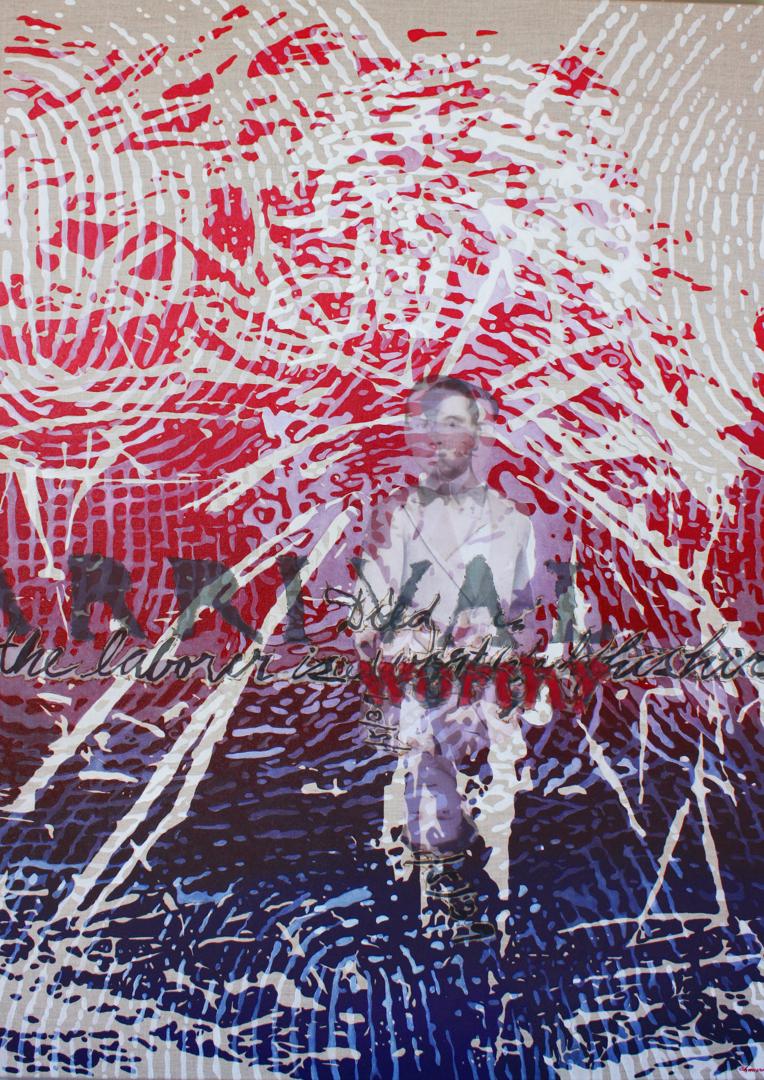Cane Fields, Teodulo and Segundo
2018
oil, silk and ink on linen, 50 x 36 in, collection of Hawaii State Foundation on Culture and the Arts
Here, Melissa Chimera portrays two male ancestors combined as a single figure. An image of the artist’s grandfather, Teodulo, is layered with an image of Chimera’s great-grandfather, Segundo. Words and dates were scanned from the ship manifest documenting Teodulo’s arrival in Hawai‘i and Segundo’s date of death, and then applied to the painting’s surface. Both Teodulo and Segundo lived their years in Hawai‘i on sugar plantations, from their arrival to Honolulu until their passing in the plantation camps. Additional text pertaining to the artist’s patrilineage is derived from a 1926 labor report produced by the HSPA (Hawai‘i Sugar Plantation Association) and drafted by a US military colonel who deemed the “laborer is worthy of his hire.”
The government issued report surveyed the status of Filipina/o migrants working on Hawai‘i sugar plantations to determine their capacity to be “worthy of their hire” and to advertise plantation work as a desirable quality of life. Teodulo’s fingerprint taken from his labor card— before he lost his finger connecting two sugar train cars—marks the composition. Indicative of a hard plantation life, Chimera’s family history also points to the enmeshed relationship of labor needs tied to a sugar economy, and the militarized governance during Hawai‘i’s U.S. Territorial years (1898-1959).
Featured in MIGRANT
